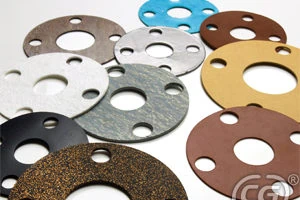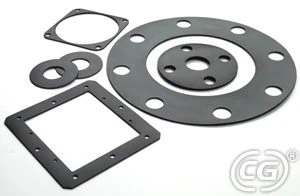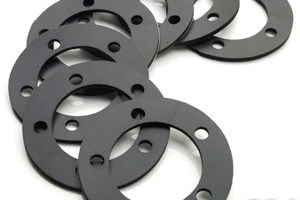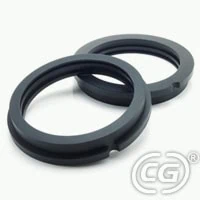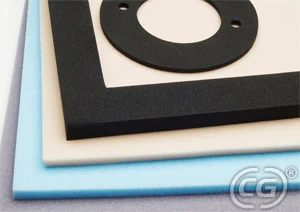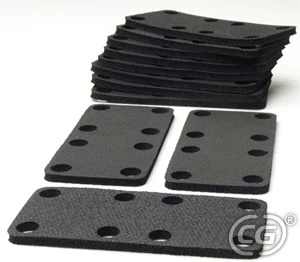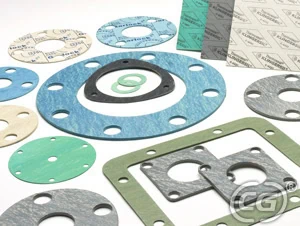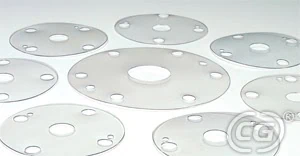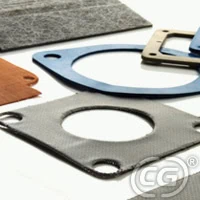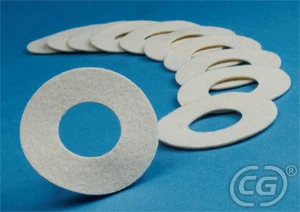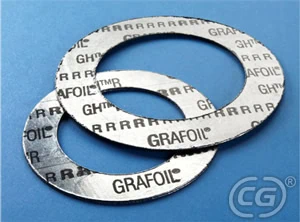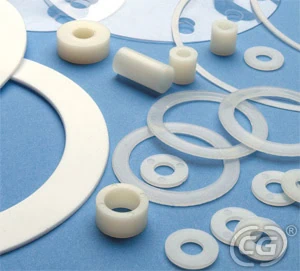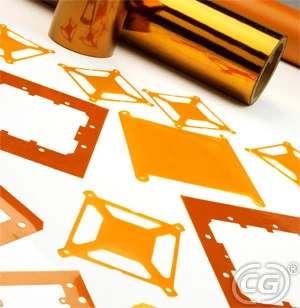Gaskets are mechanical seals used in fluid processing and handling equipment to prevent process fluids from escaping and contaminants from entering sensitive areas. Due to the critical function they serve, it is essential to choose the right one for a given system. One of the key factors to consider when designing and selecting a gasket is construction material. The material of a gasket significantly influences how it performs in the intended application. However, given the broad range of gasket material options available, some companies may find it challenging to pick the one for their needs. Fortunately, the Custom Gasket team is here to assist you.
At Custom Gasket Manufacturing, our core service offering is the manufacture of custom gasket solutions for a diverse array of applications. Equipped with extensive manufacturing experience, our team has the knowledge, skills, and tools to provide customers with the ideal gasket for their needs. Below we outline important information regarding the selection of gasket materials to help industry professionals determine which material best suits their application.
Types of Gasket Materials
As indicated above, there are numerous gasket materials available, each of which offers unique characteristics that make it suitable for different applications. Some of the gasket materials we regularly work with are:
Rubber
Rubber comes in several formulations and grades, making it ideal for a wide range of applications with varying environmental and operating conditions. It can be processed by many different manufacturing processes, depending on the part and production specifications.
Rubber Molding Compounds
Rubber molding compounds are utilized in molding operations—e.g., compression molding, transfer molding, and injection molding—to create gaskets in a variety of shapes and sizes.
Closed-Cell Sponge Rubber
Closed-cell sponge rubber features cells that are fully separated from surrounding cells to prevent the intrusion of fluids. It is available in soft, medium, and hard densities.
Open-Cell Sponge Rubber
Open-cell sponge rubber features interconnected cells that allow gases, liquids, and other media to pass through the material. It is available in soft, medium, medium-firm, firm, and extra firm densities.
Compressed Non-Asbestos
Compressed non-asbestos materials consist of non-asbestos fibers (e.g., fiberglass or aramid fibers) combined with rubber. This formulation results in better temperature and pressure performance.
Cork
Cork demonstrates high compressibility and flexibility. Combining cork with rubber (e.g., nitrile or neoprene) produces a gasket material that is also resistant to fuels, oils, and solvents.
Electrical Insulation 
Electrical insulation refers to materials used in electrical applications for their lack of electrical conductivity.
EMI/RFI Shielding 
EMI/RFI shielding refers to materials used to protect electrical and electronic devices from electromagnetic and radio-frequency interference.
Fiber
Fiber—also stylized as fibre—encompasses a variety of fiber-based materials, such as cellulose fiber, insulating fiber, vegetable fiber, and synthetic fiber.
Foam 
Foam is an umbrella term for materials formed by trapping gas within interconnected or separate cells inside of a solid or liquid.
Flexible Graphite 
Flexible graphite consists of mineral graphite with a carbon content between 95–99%. The three most commonly available types are pure graphite sheets, graphite sheets with a tang core, and laminated graphite sheets with a stainless steel insert.
High-Temperature Materials 
High-temperature materials are designed to withstand exposure to high temperatures.
Kapton®, Viton®, Mylar®, and Vamac® are registered trademarks of DuPont™.
Adding Pressure Sensitive Adhesive (PSA) Backing
Most of the materials listed above are available with or without a pressure-sensitive adhesive (PSA) backing, depending on the needs of the customers. While the addition of a PSA backing reduces the amount of time and labor required for the installation of a gasket, it is not recommended for the following applications:
- When using EMI shielding gaskets (the adhesive can reduce the effectiveness of the shielding material)
- When solvent resistance is critical (the adhesive is susceptible to degradation and damage from solvents)
- When there is little flat surface area (the adhesive cannot form an adequate adhesive bond without sufficient surface area)
- When the gasket will be subjected to regular stress (the adhesive may lose its integrity over time)
Key Selection Considerations for Gasket Materials
When choosing a gasket material, there are several factors to keep in mind to ensure the one chosen is appropriate for the intended application. Some of the key considerations are:
- Temperature: what temperature range is it expected to withstand?
- Pressure: what pressure range is it expected to withstand?
- Media: what materials will it be exposed to? (e.g., are the process fluids abrasive or corrosive?)
- UV and ozone exposure: will it be exposed to UV radiation and ozone?
- Product standards: is it subject to any industry-specific product requirements? (e.g., does it need EMI shielding properties?)
- Industry standards: is it subject to any other industry-specific standards? (e.g., does it need to meet ASTM, UL, or Mil-spec requirements?)
Contact the Experts at Custom Gasket for Custom Gasket Solutions
Custom Gasket Manufacturing specializes in providing custom gaskets, seals, and other rubber products. Our manufacturing capabilities include die-cutting, specialty cutting (i.e., flash cutting, laser cutting, and waterjet cutting), rubber molding, and rubber extrusion. Whether a customer needs a custom gasket or other product, our team provides a high-quality solution on time and in budget. To find out more about our custom gaskets and other product solutions, contact us today. For pricing details, request a quote.
Call 800-985-6750 or email your inquiry to sales@customgasketmfg.com.



